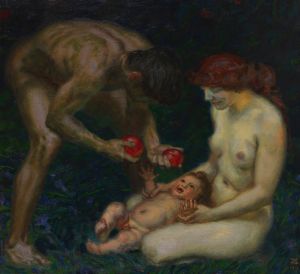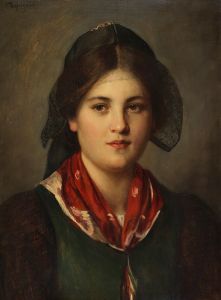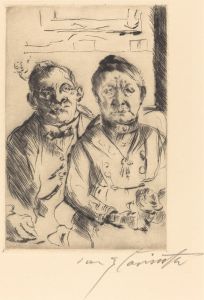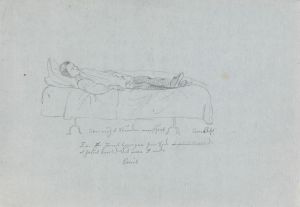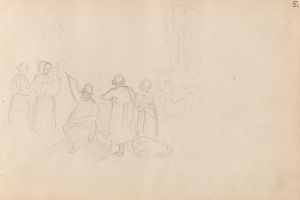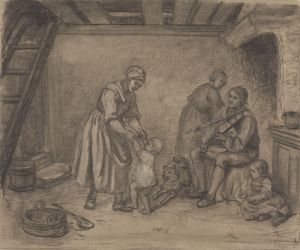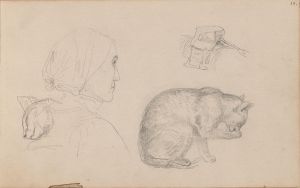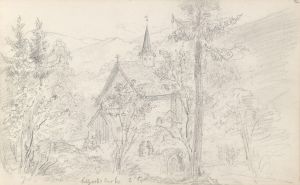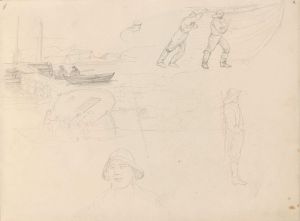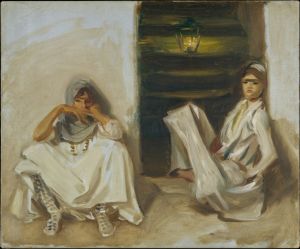
Double portrait
A hand-painted replica of Adolph Tidemand’s masterpiece Double portrait, meticulously crafted by professional artists to capture the true essence of the original. Each piece is created with museum-quality canvas and rare mineral pigments, carefully painted by experienced artists with delicate brushstrokes and rich, layered colors to perfectly recreate the texture of the original artwork. Unlike machine-printed reproductions, this hand-painted version brings the painting to life, infused with the artist’s emotions and skill in every stroke. Whether for personal collection or home decoration, it instantly elevates the artistic atmosphere of any space.
Adolph Tidemand was a prominent Norwegian painter known for his detailed and culturally rich depictions of Norwegian life and traditions during the 19th century. His works often focused on the everyday life of Norwegian people, capturing the essence of rural and folk culture. Among his notable works is the "Double Portrait," which, like many of his paintings, reflects his interest in portraying the character and spirit of his subjects.
The "Double Portrait" by Adolph Tidemand is a fine example of his skill in portraiture, although specific details about this particular painting are not extensively documented. Tidemand's portraits are generally characterized by their attention to detail and the ability to convey the personality and status of the subjects. His works often include elements that highlight the cultural and social context of the individuals portrayed, providing a glimpse into the lives of Norwegians during his time.
Tidemand was born on August 14, 1814, in Mandal, Norway. He studied art in Copenhagen and later in Düsseldorf, Germany, which was a significant center for art and culture during the 19th century. The Düsseldorf School of Painting, where Tidemand honed his skills, was known for its emphasis on detailed realism and historical accuracy, elements that are evident in Tidemand's work.
Throughout his career, Tidemand traveled extensively across Norway, gathering inspiration from the country's landscapes and its people. His travels allowed him to observe and document the diverse customs and traditions of Norwegian society, which he then translated into his art. This dedication to capturing the authentic spirit of Norway made Tidemand one of the leading figures in Norwegian art, and his works are considered vital to understanding the cultural history of the nation.
While the specific subjects of the "Double Portrait" are not widely recognized, Tidemand's ability to capture the essence of his sitters is well-documented in his other works. His portraits often feature individuals in traditional Norwegian attire, set against backdrops that reflect their environment and lifestyle. This approach not only highlights the individuality of the subjects but also serves as a historical record of Norwegian cultural heritage.
Adolph Tidemand's contribution to art extends beyond his paintings. He played a crucial role in the development of Norwegian national identity through art, particularly during a time when Norway was seeking to establish its cultural independence. His works are celebrated for their historical significance and artistic merit, and they continue to be studied and admired for their portrayal of 19th-century Norwegian life.
In summary, while specific information about the "Double Portrait" by Adolph Tidemand is limited, it can be appreciated within the broader context of his oeuvre. Tidemand's dedication to realism and cultural representation makes his work an invaluable part of Norwegian art history, and his portraits remain a testament to his skill and vision as an artist.







